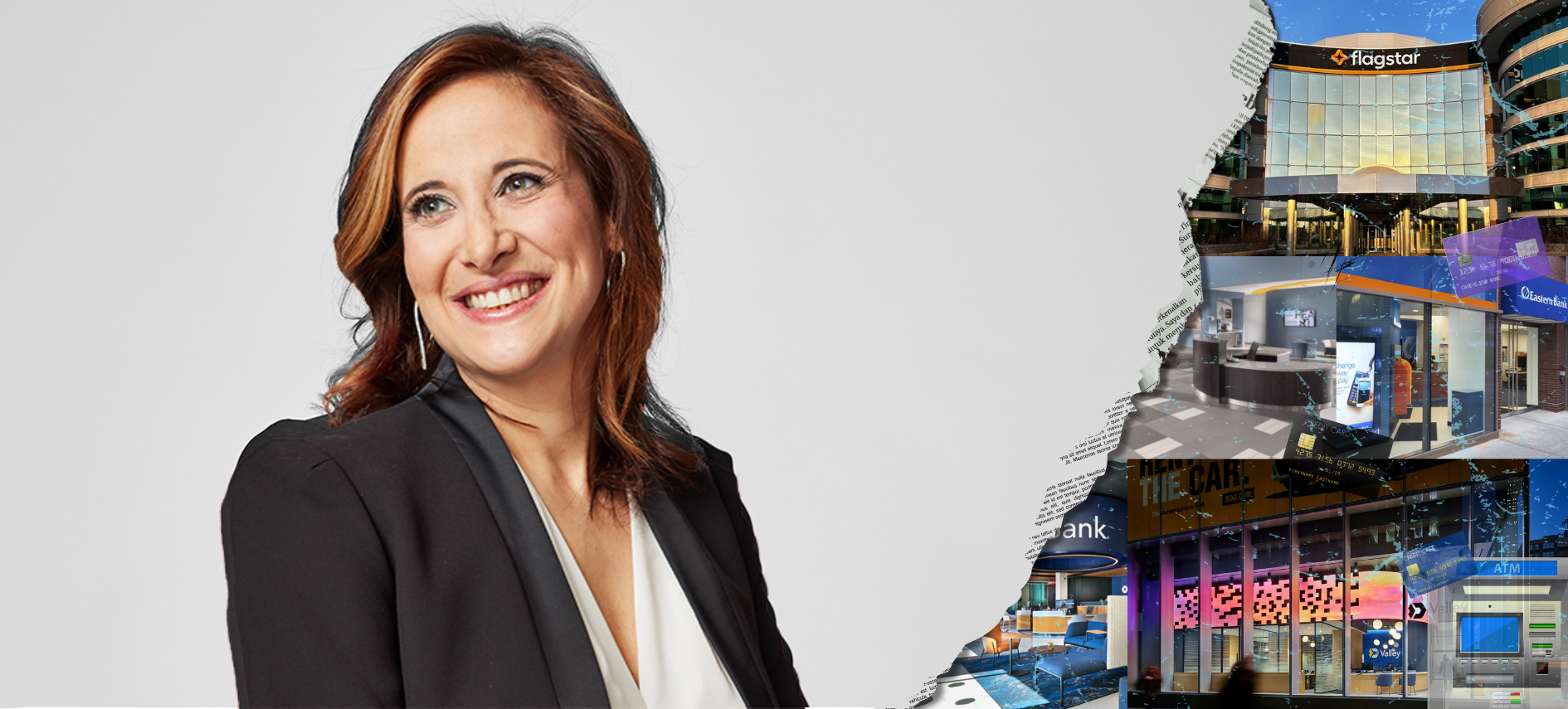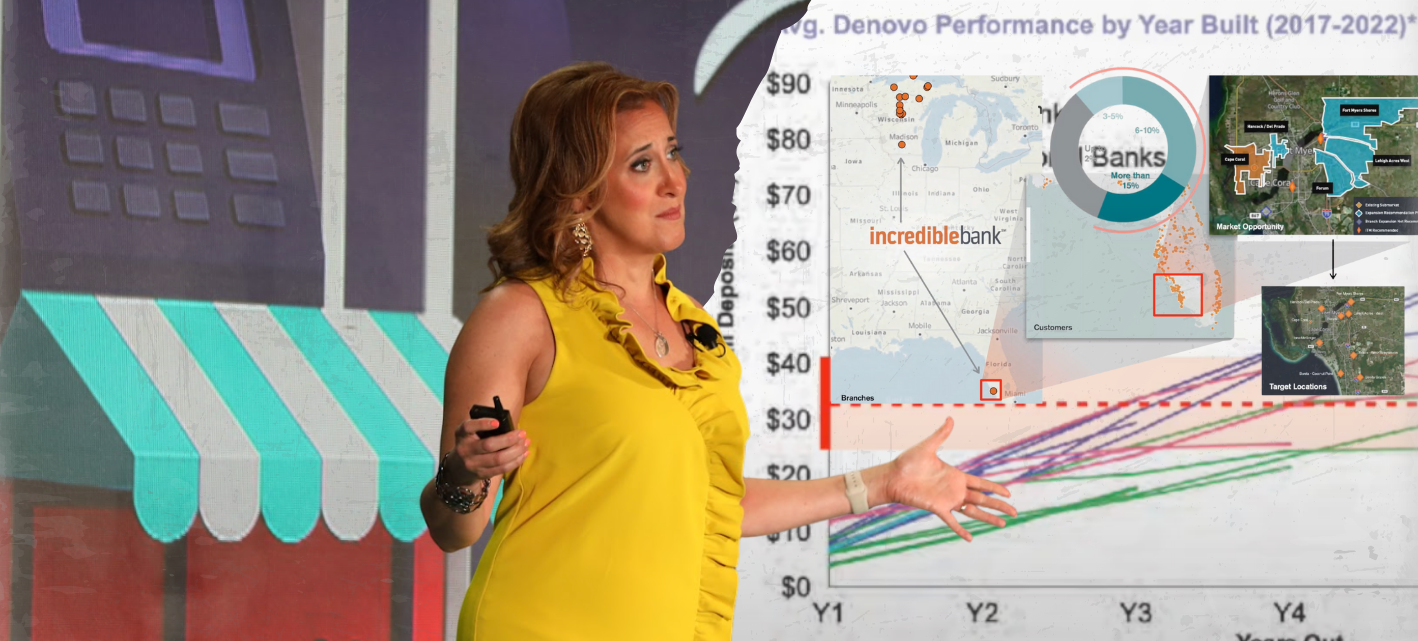There is a race taking place in the retail banking ecosystem, one that has broad implications for the future.
In a conversation with BankSpaces ahead of her featured keynote in Clearwater Beach, Gina Bleedorn, President and CEO of Adrenaline, addressed one of retail banking's most pressing challenges: the industry-wide push for low-cost deposits achieved by institutions deploying swift market presence and scale. At the same time, she emphasized how many financial institutions may be overlooking crucial strategic considerations.
She highlighted the importance of nuanced thinking about branch networks during an organization’s M&A activities, arguing that banks should carefully consider how their growth strategies align with consumer expectations and market positioning.
Bleedorn challenged current approaches to retail delivery in banking, advocating for a more deliberate and purposeful strategy, suggesting that successful transformation of physical locations must be tailored to each institution's unique circumstances and progress thoughtfully from their current state.
“This is not a one-size-fits-all, nor should it be,” she said. “It has to evolve from where it is today and that's going to require a concerted strategy and effort to get there.”
Bleedorn shared valuable insights for retail banking leaders navigating the often complex landscape for how to marry growth, consolidation, and branch transformation into a powerful network that effectively balances efficiency and experience.
Q+A
This transcript has been edited for length and clarity.
How should banks design a branch experience to serve digital natives seeking advisory services?
Gina: Young consumers are increasingly seeking in-person financial advice, even as routine transactions decline. This shift demands a reimagining of branch spaces. Modern branches should be smaller than their predecessors, yet designed with flexibility to support various engagement levels.
The ideal branch mirrors Starbucks' versatile environment - offering multiple seating options and privacy levels. This design builds trust gradually: customers may initially prefer casual conversations in open spaces, before moving to private offices for detailed financial discussions. The key is creating perceived privacy without intimidation.
This transformation extends beyond physical space to staffing. Traditional teller-focused roles must evolve into relationship builders who are comfortable with sales and cross-selling. Well-designed spaces attract customers and help recruit talented staff - a key advantage given banking’s current hiring challenges.
The biggest shift: branches are becoming advice centers rather than transaction hubs, though they must still efficiently handle basic banking needs.
Your recently released ‘Branch Advantage Report’ reveals a 2.3% ROI for transformed branches over the past five years with some institutions realizing 15%+ customer growth versus the industry average of 3.3%. What’s driving this?
Gina: Analytics should drive branch strategy beyond basic location selection. While most banks use analytics to identify growth areas, true success demands a deeper strategic approach. Banks need to analyze market dynamics to determine optimal branch formats that resonate with local customers for more effective capture of market share.
Between analytics and final design lies crucial strategic planning - a step many institutions overlook. This planning phase aligns key stakeholders around a shared vision for retail delivery that connects branch design with business intent across varying market types. Spend allocation, staffing, technology, and both interior and exterior design approaches are dynamically optimized to drive acquisition, enhance cross-selling, strengthen customer loyalty, and improve operational efficiency.
This comprehensive approach delivers results: branches following this strategy showed 22% above-market deposit growth when strategically transforming the branch network, even when adjusted for market conditions. Success comes from understanding not just where to place branches, but how to optimize every aspect of the branch experience for specific market conditions and customer needs.
How can banks balance the human element with the need for digital integration?
Gina: The concept of a branch "North Star" must constantly evolve, as branch designs are effectively dated before deployment. Interestingly, some of the most impactful branch technologies aren't cutting-edge innovations, but rather established tools being used suboptimally.
Two key technologies need better implementation. We see Interactive Teller Machines (ITMs) fail when placed inside lobbies or installed without concerted efforts to drive customer adoption. Deploy these in drive-ups or 24-hour vestibules with maximized brand design impact, serving as an alternative channel for extended hours and highly efficient beacons to boost perceived presence. And, we find that long-established Teller Cash Recyclers (TCRs) are still often misplaced behind teller lines, negating their staffing efficiency and customer experience benefits that integrating them behind pods in open floor plans can enable.
Additional technologies to consider include tablets for banker enablement and customer mobile integration, especially as AI tools mature to support advisory conversations, but the fundamental principle remains: design experiences around how staff and customers should use the technology. Many banks make the mistake of letting tech lead design, compromising ROI. Ultimately, success hinges on future-proofing design through flexibility, modularity, and smart planning—anticipating both known and unforeseen innovations.
How should banks evaluate each of their branch's unique role in their overall network strategy?
Gina: Modern branch networks require strategic interconnection, moving beyond simple hub-and-spoke models to purpose-led design archetypes. Successful networks segment branches by market characteristics rather than just geography and align investment for where market room for growth is greatest, applying distinct archetypes for different needs.
Metropolitan locations prioritize exterior visibility and flexible space for business development staff in high-value areas with strong market opportunities. Community branches operate with smaller footprints, leveraging technology like ITMs and more focused staffing. Hybrid locations may require larger spaces to accommodate line-of-business staff and portfolio management, emphasizing cross-selling and relationship deepening.
Strategy also means choosing what not to do - a crucial principle when evolving from traditional branch models. While common patterns exist, each bank must tailor its approach to specific markets and goals. Random changes without strategic foundation amount to "throwing spaghetti at the wall." Success comes from understanding each location's role in the broader network ecosystem.
How can banks ensure their physical locations deliver ROI on their transformation/new build spends?
Gina: Branch investment strategy has shifted from justifying ROI to optimizing the allocation of committed funds. A key challenge is that one in three de novo branches fail. This reality highlights the importance of both location analytics and purposeful design.
Branch networks create value in four key areas:
- Acquisition - crucial for deposit growth
- Cross-selling - deepening wallet share
- Attrition mitigation - defending existing portfolios through technology and automation
- Efficiency - strategic cost reduction through downsizing or consolidation
Success requires market-specific strategies rather than repeating what you’ve always done or copying competitors' designs. Each investment decision should align with clear market objectives, whether that's capturing new deposits, deepening relationships, or optimizing operational costs. The goal isn't just to spend allocated funds, but to create purposeful spaces that drive specific business outcomes.
This strategic investment approach produces higher ROI than following industry trends or maintaining traditional branch models which won’t meet the market.
Posted by
Branching into Tomorrow – Together.
Exploring the Future of Bank Branch Design + Technology
April 19-21, 2026 | Bonita Springs, FL




-Dec-04-2025-03-32-25-8096-PM.png)
-1.png)




Comments